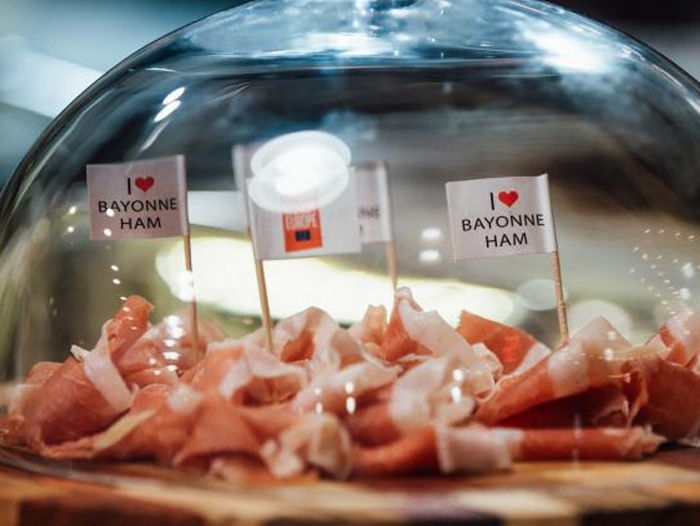US Chefs Discover the Flavor and History of Bayonne Ham
February 5, 2019 | 2 min to read

Just as Italy has Parma ham and Spain is famous for Iberico ham, France has a signature pork product that is gaining a following stateside. Bayonne ham — also known as jambon de Bayonne — has been made in the Southwest of France for more than 1,000 years using the same painstaking process, which results in a unique, moderately salty cured ham with a range of culinary applications. In this interview, Bayonne Ham Council US brand ambassador Florane Gambert-Jouan discusses what makes it stand out from other hams and how Bayonne ham is building its reputation among US chefs and consumers.
What classifies a ham as Bayonne ham, and what sets it apart from other hams?
Bayonne ham is a dry cured ham from the Southwest of France. The region is characterized by the meeting of the temperate, humid oceanic climate coming from the Atlantic and the drier air from the Pyrenees. This creates the perfect production conditions. According to legend, a hunter named Gaston Febus wounded a wild boar that ran off only to be discovered months later perfectly preserved within the Natural Spring of the Adour Basin.
Four ingredients are essential for the production of Bayonne ham: pig, salt, air and time. The pigs used for Bayonne ham are bred locally, in the area around the Adour Basin. Salies de Bearn salt is obtained exclusively through the evaporation of salty spring water from the Reine Jeanne D’Oraas spring, between the sea and the mountains. Salies de Bearn has been trapped beneath the Pyrenees for millions of years and preserved in water at concentrations 10 times that of seawater.
To read the rest of the story, please go to: The Bayonne Ham Council
